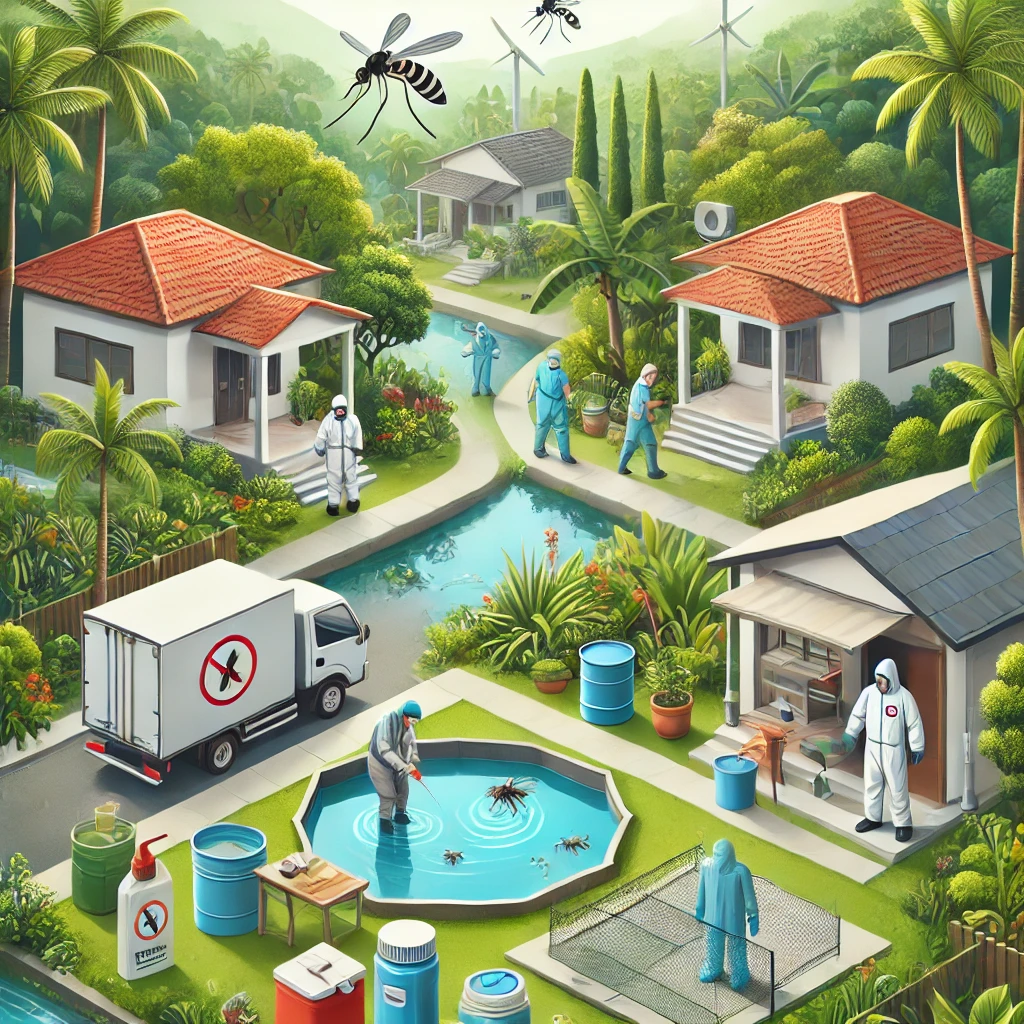Mosquitoes are a persistent threat in many tropical and subtropical regions, and mosquito in niquinomo las cruzitas, specifically the area of Las Cruzitas, faces ongoing challenges with mosquito populations. These pests not only cause discomfort with their bites but are also carriers of dangerous diseases such as dengue, Zika virus, malaria, and chikungunya. In this article, we will cover effective methods for mosquito control in Las Cruzitas, outline best practices for prevention, and discuss ways to protect yourself and your community from mosquito-borne diseases.
Understanding the Mosquito Problem in Las Cruzitas
Mosquito Habitats in Niquinohomo
The warm, humid climate of mosquito in niquinomo las cruzitas provides an ideal environment for mosquitoes to thrive. Las Cruzitas, with its forested areas, small water bodies, and dense vegetation, creates ample breeding grounds for these insects. Stagnant water sources such as ponds, puddles, and even small containers left outside become breeding hubs for mosquito larvae.
In this setting, effective control measures are essential to limit mosquito populations and reduce the risk of disease transmission. The primary mosquito species of concern in Niquinohomo are Aedes aegypti and Anopheles mosquitoes, which are known carriers of diseases.
Diseases Spread by Mosquitoes in Las Cruzitas
1. Dengue Fever
Dengue is a viral infection transmitted by the Aedes aegypti mosquito. Symptoms of dengue include high fever, joint pain, and severe headaches. Without proper treatment, severe dengue can lead to complications and become life-threatening.
2. Zika Virus
The Zika virus is another threat carried by the Aedes mosquito. While symptoms are generally mild, Zika poses a significant risk to pregnant women as it can cause birth defects.
3. Malaria
In regions like Las Cruzitas, malaria is commonly transmitted by Anopheles mosquitoes. Malaria symptoms include fever, chills, and flu-like symptoms, and if left untreated, it can lead to severe health complications.
Effective Mosquito Control Strategies in Las Cruzitas
1. Eliminate Standing Water
One of the most effective ways to control mosquito populations is to eliminate their breeding grounds. Mosquitoes lay eggs in stagnant water, and by removing sources of standing water, we can reduce the number of new mosquitoes. Here are essential steps for eliminating standing water:
- Regularly empty outdoor containers: Buckets, flowerpots, and other containers can accumulate rainwater, creating breeding sites.
- Check and clean gutters: Clogged gutters can hold water, providing a breeding site for mosquitoes.
- Properly store or dispose of tires: Old tires collect rainwater and are common breeding grounds for mosquitoes.
2. Apply Larvicides in Water Sources
For water sources that cannot be emptied, such as ponds or larger water containers, larvicides can be an effective solution. Larvicides prevent mosquito larvae from developing into adults and help keep mosquito populations low.
- Choose environmentally friendly larvicides: Select larvicides that are safe for humans, pets, and wildlife.
- Apply regularly: Larvicides may need to be applied periodically to remain effective, depending on local conditions.
3. Install Mosquito Nets and Screens
Mosquito nets and screens are highly effective in protecting against mosquito bites, especially at night. For residents in Las Cruzitas, investing in mosquito in niquinomo las cruzitas nets for beds and window screens is an essential step in reducing mosquito-borne illnesses.
- mosquito in niquinomo las cruzitas nets: Mosquito nets provide physical barriers, protecting individuals while they sleep.
- Window and door screens: Screens prevent mosquitoes from entering the home, especially during high mosquito activity times.
Personal Protection Against Mosquito Bites
1. Use Insect Repellents
Insect repellents are an effective defense against mosquito bites. Repellents containing DEET, Picaridin, or oil of lemon eucalyptus are known to offer good protection.
- Apply according to instructions: Use repellents as directed, especially if applying on children.
- Reapply as needed: Repellents wear off over time, especially in hot and humid climates, so reapplication may be necessary.
2. Wear Protective Clothing
Clothing can offer a physical barrier against mosquito in niquinomo las cruzitas. Light-colored, loose-fitting clothes covering most of the body help in minimizing exposed skin.
- Long sleeves and pants: These provide extra protection, especially in areas with high mosquito activity.
- Choose light-colored clothing: Dark colors tend to attract mosquitoes, so opting for lighter shades can help.
Community Initiatives for Mosquito Control
1. Organize Clean-Up Campaigns
Community-driven clean-up campaigns are effective in addressing large mosquito breeding sites across neighborhoods. By working together, residents can reduce potential habitats for mosquitoes and protect the community as a whole.
- Regularly scheduled clean-ups: Organize periodic events to remove trash, clean gutters, and dispose of waste in common areas.
- Promote community awareness: Educating residents about mosquito control measures encourages participation and cooperation.
2. Educate the Community on Mosquito-Borne Diseases
Raising awareness about mosquito-borne diseases and preventive measures is crucial for community health. Local organizations or health departments can play a key role in educating the public on the dangers of mosquito-borne diseases and the importance of mosquito control.
- Workshops and seminars: Offer information sessions on how to eliminate mosquito breeding grounds and personal protection.
- Distribute informational materials: Flyers, posters, and brochures can help communicate essential prevention tips.
3. Implement Governmental and Municipal Support
Local authorities can help support mosquito control efforts by providing resources, such as pesticides and equipment, or by conducting area-wide fumigation in heavily infested zones. These efforts, combined with community cooperation, can significantly reduce mosquito populations.
- Fumigation programs: Fumigations are particularly effective during peak mosquito seasons.
- Support for neighborhood initiatives: Governmental support in the form of supplies or funding can make community programs more effective.
Conclusion
Managing the mosquito population in Las Cruzitas, Niquinohomo, is essential for protecting community health and preventing the spread of mosquito-borne diseases. Through a combination of personal preventive measures, community efforts, and government support, it is possible to significantly reduce mosquito populations and the associated risks.
